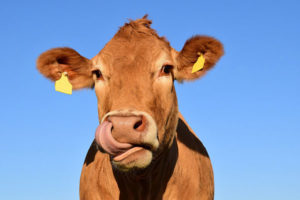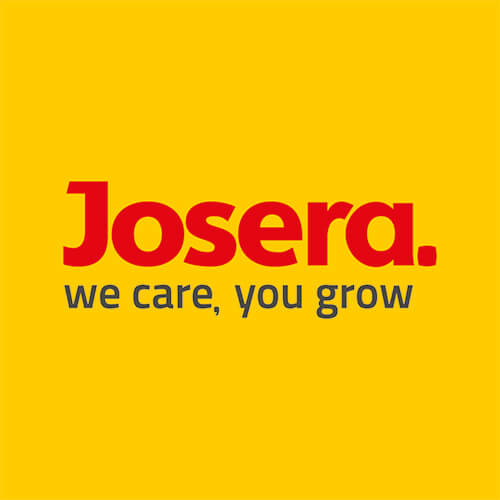Milk production
Whereas the average milk yield in Germany in 2000 was 6,208 kg/cow/year, the average milk yield in 2016 was 7,746 kg/cow/year.
About 60% of the turnover in agriculture comes from animal production. Milk production accounts for the largest share of this. A high milk yield with optimum milk content is only possible if the cows have a high well-being. Only a healthy cow with a stable metabolism, living in a species-appropriate environment and receiving high-quality feed can fully exploit its genetic performance potential.
In addition to genetics, the feeding of dairy cows has a particularly important and significant influence. Not only on the milk yield but also on the milk ingredients.
Nutritional status of dairy cows – parameters
The following parameters can provide information on the nutritional status of dairy cows and are used to evaluate dairy cattle rationing:
- Fat: Acidosis, ketosis, supply with (structurally effective) crude fibre
- Protein: Energy supply, supply with usable crude protein
- Urea: Raw protein supply, UDP, Rumen nitrogen balance
- Fat-protein quotient (Fat protein ratio): Acidosis, ketosis
- Conductivity: Udder health (feed hygiene)
- Content of somatic cells (cell count): Udder health (feed hygiene)
- Freezing point: Energy, crude protein supply
- Trace elements: Trace element supply (e.g. iodine, selenium)

The most important influence on the milk protein content is the energy supply or the supply of usable crude protein. The protein content decreases with increasing milk yield. To ensure that sufficient milk protein can be produced, cows must be sufficiently supplied with usable crude protein (Absorbable protein). The usable crude protein consists of the untreated feed protein in the rumen and the microbial protein. The predominant part consists of microbial protein. An improvement in the milk protein content can therefore primarily be achieved by increasing microbial protein formation. This is achieved in particular by an adequate energy supply. Only at very high performance levels does the untreated feed protein become more important. The milk urea content is a good measure for the supply of the rumen microbes with the raw protein building block, nitrogen. An urea content below 15 mg/100 ml milk indicates a significant nitrogen deficiency in the rumen. This limits the activity of the rumen microbes. The feed intake and thus the performance decreases. The optimum urea content in the milk should be approx. 20–25 mg/100 ml. Urea values above 30 mg/100 ml are an indication of excess nitrogen or crude protein in the rumen. The urea values thus reflect the rumen nitrogen balance (RNB). At a urea content of 20–25 mg/100 ml, the RNB is balanced.
Feeding errors occur at very low and at very high milk protein and milk urea contents. A high milk protein content is generally not a problem. However, it indicates a surplus of energy in old milking cows. The ration must be checked so that the cows do not become fatty.
The following limit values may be used as indicators of energy deficiency:
| kg milk | milk protein content |
|---|---|
| bis 27 kg | < 3,2 % |
| 27 bis 35 kg | < 3,0 % |
| > 35 kg | < 2,8 % |
A further possibility to detect feed-related metabolic disorders such as ketosis and acidosis as single animal or herd problems is the analysis of the fat-protein quotient (FPQ). An FPQ ≤ 1.1 suggests acidosis and indicates an insufficient raw fibre supply with negative effects on the buffer capacity of the rumen (sub-clinical rumen acidosis). In addition to the possible acute cases of illness, there may also be late effects. The health of the hooves is often affected; this may only become apparent with the next round of hoof care. An FPQ ≥ 1.5 indicates ketosis. It is important that this FPQ be calculated individually for each animal. If more than 10% of the animals show too low or too high FPQ at the beginning of lactation, this should be seen as a herd problem, and action is needed. It is strongly discouraged to average the FPQ because usually nothing can be derived from this averaged value.
How can the milk ingredients be influenced?
Mineral feed – JOSERA NutriEffect
Hannes Pump uses JOSERA NutriEffect against mastitis and for a higher milk yield. The milk ingredients were already much more constant after 3-4 weeks and the animals’ body condition was much more stable. Watch the whole video here!
Special feed – JOSERA DairyPilot
Is your operative goal to increase the performance of your herd? Or are the health and resilience of your herd important to you? Do you love your animals and are looking for a product to generate calm and a relaxed atmosphere in the barn? In that case, you are exactly right here at JOSERA with the product DairyPilotFlavoVital®!
Your benefits at a glance:
- a robust and resilient herd
- increased milk yield and fattening performance
- better animal welfare
- significantly more calmness and composure in the barn
- higher profits
Conclusion
- Sufficient structure promotes ruminant chewing, salivation and thus the optimal rumen environment.
- Use special start phase feeds with a variety of compositions.
- Do not allow urea levels to fall below 20 mg/100 ml milk. Optimal values are between 20 and 25 mg/100 ml.
- Add buffer substances to critical rations (start phase!).
- Promote feed consumption (feed quality, feed supply around the clock, stable rumen pH).
- Optimise water supply and cow comfort.
- Aim for low cell counts.
- Milk is the most important food of animal origin
- Color and spreadability oft he butter is determined by the food of the animals If the cow eats a lot of fresh and young grass, the butter turns very yellow and delicately.
- For the production of a kg butter 20 kg of milk are needed
- Milk and other dairy products are the most important calcium suppliers in our nutrition
- Dairy cattle husbandry serves to preserve our cultural landscape. In areas where cultivation farming is not possible, grazing areas would become wild.
- In combination with honey we convert an ingredient of the milk to a messenger substance, which helps to fall asleep.
- The freezing point for milk is slightly below 0°C.
You might be interested in the following contents:
JOSERA DairyPilot – increase the milk yield of your herd
Is your operative goal to increase the performance of your herd? Or are the health and resilience of your herd important to you? Then read more about JOSERA DairyPilot!
Stall hygiene for cattle – count on the right concept!
High germ content in the environment negatively affects the animal’s immune system. The organism is busy producing antibodies and eliminating germs instead of producing milk, growth or reproductive hormones.








